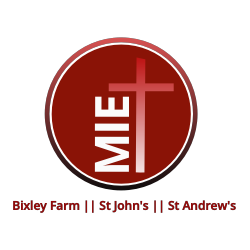Paul’s vision of the gospel and its work is global. He is gripped by a vision of a truly international Church that has been reconciled and united to God and to one another through the Cross of Christ (a foretaste and foreshadowing of Eph.1:10).
But it is important to notice the order in which things happen. We might think that we are reconciled to God in Christ first, and then on that basis we are reconciled to each other across racial and cultural boundaries. But in fact, the order is the way round. We are reconciled to each other first, and then together ‘in one body’ we are reconciled to God through the cross (2:16). The mechanics of the Cross mean that we cannot be reconciled to God without being reconciled to each other. The two are inevitably intertwined.
This is God’s vision of Church, a gloriously international phenomenon in the light of which all secular visions of multi-culturalism, failing as they are, pales into insignificance. Again we find the Church answering the highest aspirations of our society. Only in Christ is such a vision achievable. Indeed, in Christ it is inevitable.
There is only one way to the Father, and it is together, through the cross, and by the Spirit (2:13 & 18). And we must come this route whatever tribe, tongue, language or people we are from. But even such a miracle as this is not an end in itself. It is a thing of incredible beauty, but the goal is not merely for us to become fellow-citizens, or even members of His household. It is that in Christ, we together become a ‘holy Temple’, a ‘dwelling in which God lives by His Spirit’. We are caught up together into the life and the mutual indwelling of the Living God who is Father, Son and Holy Spirit. As I often say, this vision of God who has community built into His very being is the basis on which we can be brought together in unity without being pressed into uniformity, and in which we can celebrate our diversity without that leading to division.
Questions:
What do you make of Paul’s description of Gentiles before they are brought near by the blood of Christ (2:12-13)?
What is ‘circumcision’ all about, and why is Paul making a big deal of it here (2:11)? And what is the problem when it is only done by human hands? What does ‘circumcision of the heart’ look like (Deut.30:6; Jer.4:4; Rom.2:29)?
In what sense has Christ set aside the Law (2:15)? And in what sense is He not setting it aside (so Matt.5:17)?
Would you have said that His purpose in going to the cross was to create ‘one new humanity out of the two’ (2:15)? What do you think Paul means by this? How can we contribute to this, or experience this more fully at MIE?
How does Christ come and preach peace (2:17)?
What does it mean to you that you are ‘fellow citizens with God’s people and members of His household’ (2:19)? How do these images shape your thinking about being a Christian, and being a member of a Church?
How do ‘the apostles and prophets’ function as a foundation for the Church (2:20)? And how does Jesus function as ‘the chief cornerstone’?
How do we experience the Lord’s building us together to become a dwelling in which God lives by His Spirit (2:22)? What is that like at MIE? What can we point to that suggests we are a ‘holy Temple’, or that God is present by His Spirit?

